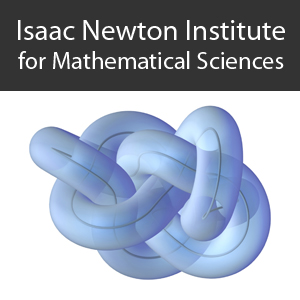A tangled problem: the structure,function and folding of knotted proteins
39 mins 12 secs,
35.90 MB,
MP3
44100 Hz,
125.03 kbits/sec
Share this media item:
Embed this media item:
Embed this media item:
About this item

| Description: |
Jackson, S (University of Cambridge)
Tuesday 04 September 2012, 08:30-09:10 |
|---|
| Created: | 2012-09-05 08:13 |
|---|---|
| Collection: | Topological Dynamics in the Physical and Biological Sciences |
| Publisher: | Isaac Newton Institute |
| Copyright: | Jackson, S |
| Language: | eng (English) |
| Abstract: | Since 2000, when they were first identified by Willie Taylor, the number of knotted proteins within the pdb has increased and there are now nearly 300 such structures. The polypeptide chain of these proteins forms a topologically knotted structure. There are now examples of proteins which form simple 31 trefoil knots, 41, 52 Gordian knots and 61 Stevedore knots. Knotted proteins represent a significant challenge to both the experimental and computational protein folding communities. When and how the polypeptide chain knots during the folding of the protein poses an additional complexity to the folding landscape. We have been studying the structure, folding and function of two types of knotted proteins – the 31-trefoil knotted methyltransferases and 52-knotted ubiquitin C-terminal hydrolases. The first part of the talk will focus on our folding studies on knotted trefoil methyltransferases and will include our work on (i) equilibrium unfolding experiments in chemical denaturants, (ii) kinetic analysis of unfolding/folding pathways, (iii) protein engineering on both the small scale (single point mutants) and large scale (creating N- and C-terminal fusions with a stable beta-grasp domain which are the deepest knotted structures known), (iv) circularisation experiments which establish that the polypeptide chain remains knotted even in the chemically denatured state, and (v) recent in vitro translation work which shows that knotting is rate limiting and also shows how GroEL/GroES play a role in the folding of these proteins in vivo. The second part of the talk will focus on our studies of knotted ubiquitin C-terminal hydrolases – UCH-L1 and UCH-L3. This will include equilibrium and kinetic unfolding and folding studies as well as recent work on the effect of point mutants associated with Parkinson’s Disease on the structure, folding and dynamics of UCH-L1. Recent work on the effect of oxidative damage on the structure of UCH-L1 will also be described and evidence that this protein adopts a partially unfolded form (PUF) on modification with the reactive aldehyde and by-product of cellular oxidative stress, HNE, will be presented. The possible cellular effects of this PUF will be discussed. |
|---|---|
Available Formats
| Format | Quality | Bitrate | Size | |||
|---|---|---|---|---|---|---|
| MPEG-4 Video | 640x360 | 1.84 Mbits/sec | 545.82 MB | View | Download | |
| WebM | 640x360 | 1.33 Mbits/sec | 394.73 MB | View | Download | |
| Flash Video | 484x272 | 568.69 kbits/sec | 163.83 MB | View | Download | |
| iPod Video | 480x270 | 506.08 kbits/sec | 145.86 MB | View | Download | |
| MP3 * | 44100 Hz | 125.03 kbits/sec | 35.90 MB | Listen | Download | |
| Auto | (Allows browser to choose a format it supports) | |||||

